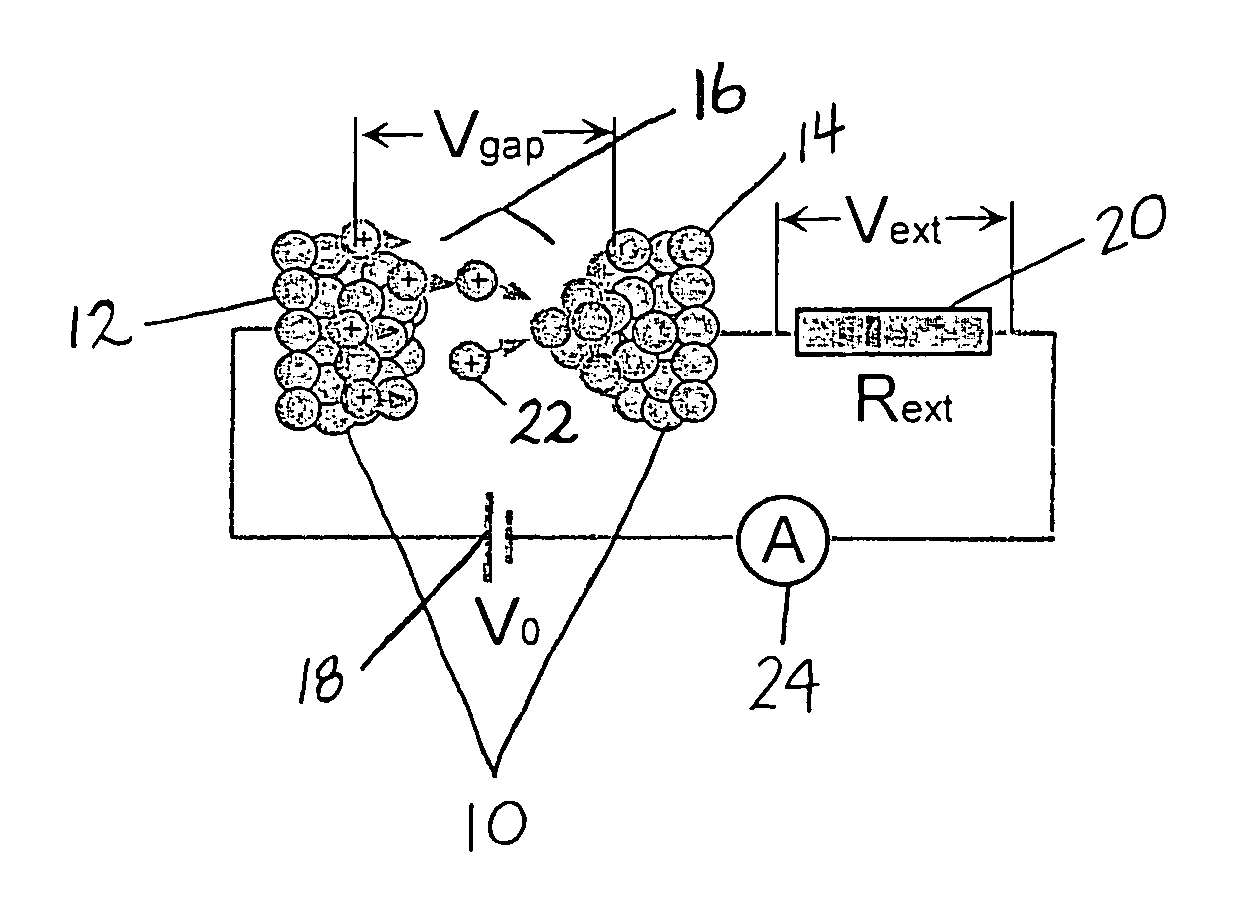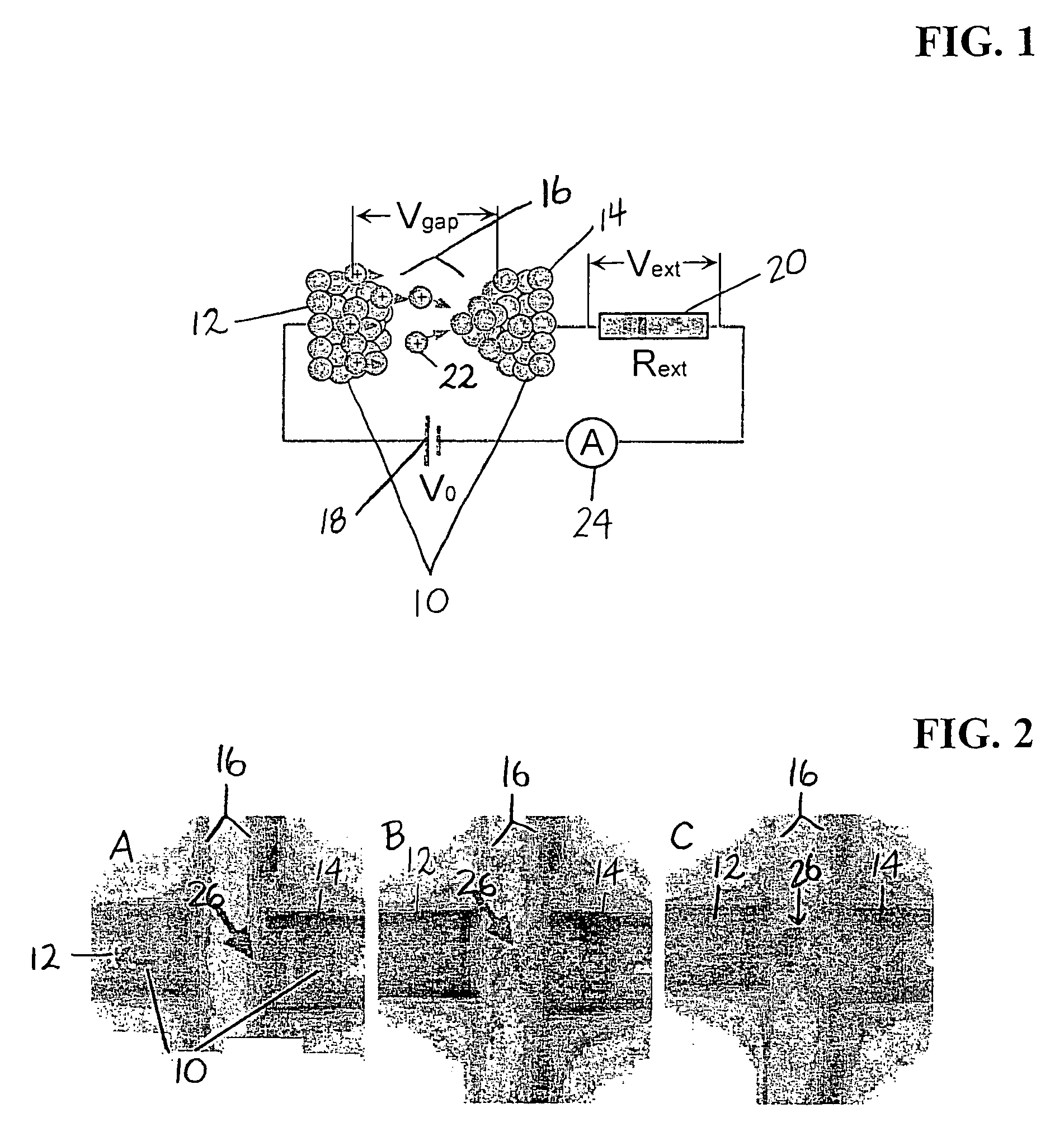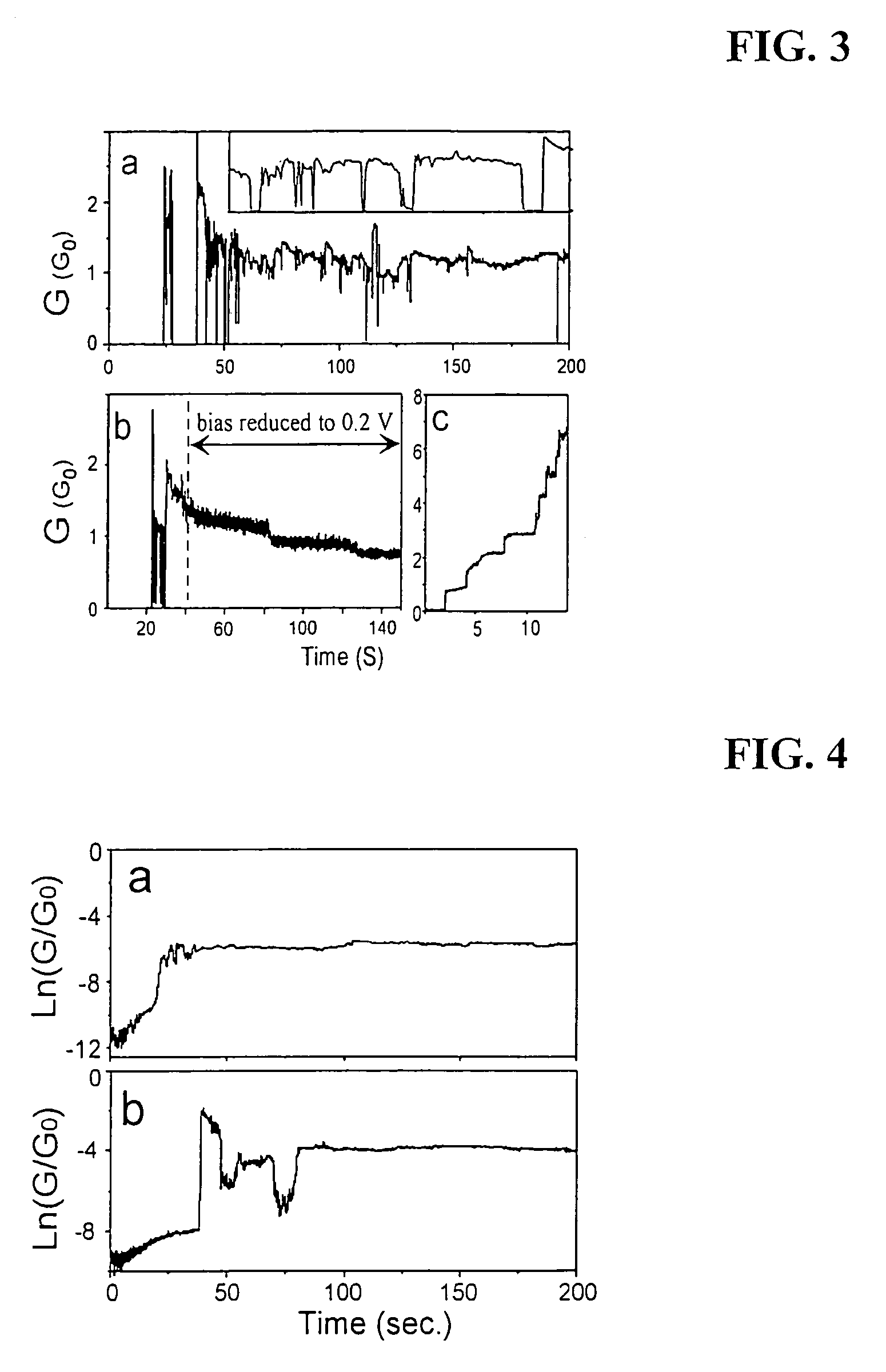Apparatus and method for fabricating arrays of atomic-scale contacts and gaps between electrodes and applications thereof
a technology of atomic-scale contacts and electrodes, which is applied in the direction of semiconductor/solid-state device testing/measurement, instruments, electrochemical variables of materials, etc., can solve the problems of inability to remove atomic-scale contacts fabricated by mechanical means from the apparatus, inability to mass-produce and multi-application, and inability to achieve mass-production and multi-application
- Summary
- Abstract
- Description
- Claims
- Application Information
AI Technical Summary
Problems solved by technology
Method used
Image
Examples
Embodiment Construction
[0027]This description discloses an apparatus and method for fabricating self-terminating molecular-scale and atomic-scale contacts and gaps between two metal electrodes and applications thereof.
[0028]FIG. 1 illustrates a general overview of one embodiment of an apparatus used for making molecular-scale and atomic-scale contacts and gaps. In FIG. 1, electrodes 10, including a first electrode, anode 12, and a second electrode, cathode 14, are separated by gap 16 in an electrolyte. Electrodes 10 can be made of any metal, including copper, gold, silver, aluminum, platinum, palladium, nickel, cobalt, and iron. A power source 18, a resistor 20, and a meter 24 are electrically coupled in series between the first electrode, anode 12, and the second electrode, cathode 14. Cathode 14 is coupled to a resistor 20 in a series. Resistor 20 includes any commercially available resistor, any electronic element with resistance, or any other material with resistance.
PUM
 Login to View More
Login to View More Abstract
Description
Claims
Application Information
 Login to View More
Login to View More - R&D
- Intellectual Property
- Life Sciences
- Materials
- Tech Scout
- Unparalleled Data Quality
- Higher Quality Content
- 60% Fewer Hallucinations
Browse by: Latest US Patents, China's latest patents, Technical Efficacy Thesaurus, Application Domain, Technology Topic, Popular Technical Reports.
© 2025 PatSnap. All rights reserved.Legal|Privacy policy|Modern Slavery Act Transparency Statement|Sitemap|About US| Contact US: help@patsnap.com



